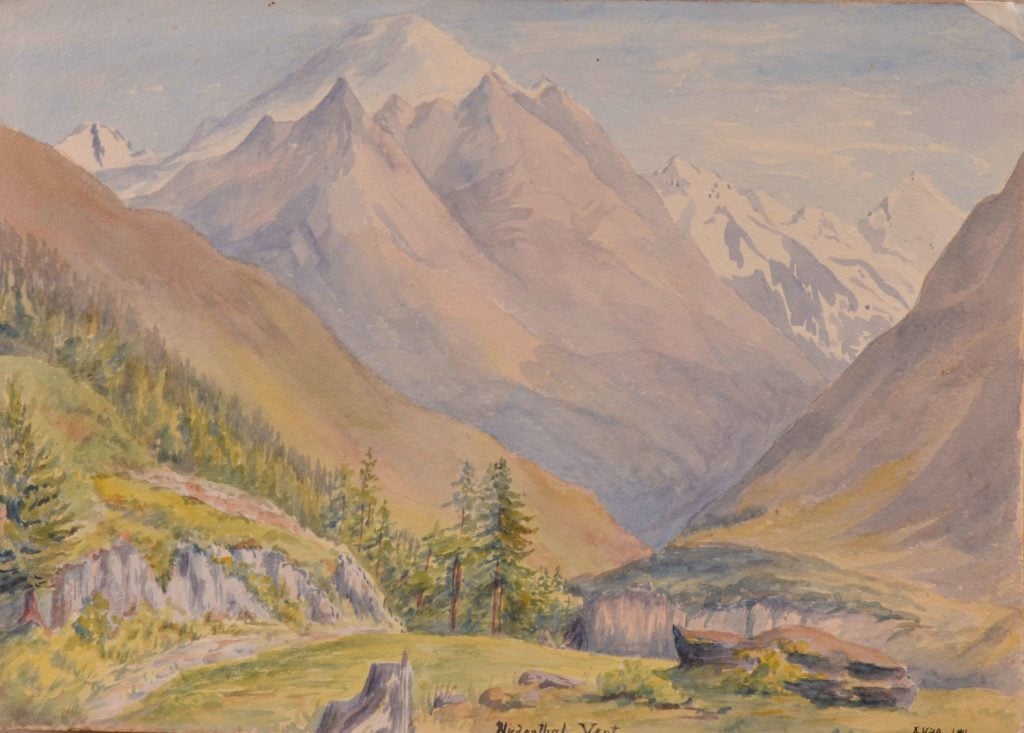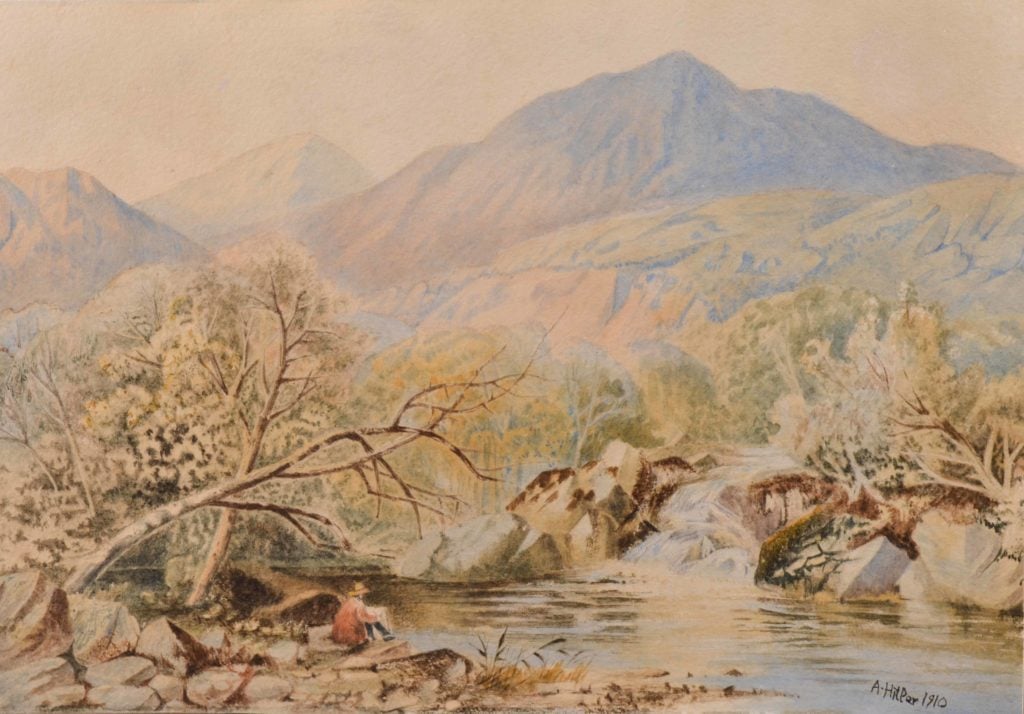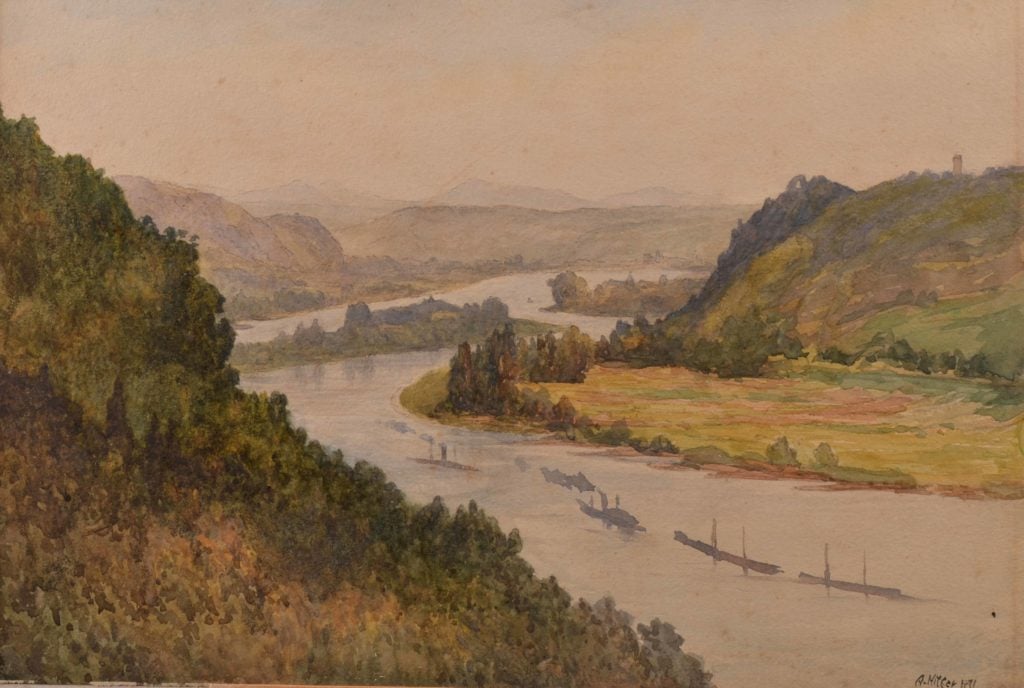Law & Politics
Police Seize Cliché Mountain Paintings by ‘A. Hitler’ From a Berlin Auction House, Saying They’re Fakes
Authorities say the watercolors may be forgeries.

Authorities say the watercolors may be forgeries.

Kate Brown

Three paintings, allegedly by Adolf Hitler, have been seized by German police from the auction house where they were up for sale.
The watercolors, which date from between 1910 and 1911, depict mountainous landscapes of the Alps and the Rhine river, and one includes a distant figure resting under a tree. They are not particularly special—in fact, they are fairly unremarkable clichés of the Romantic landscape idiom—except for the signature at the bottom of each work, which reads “A. Hitler.”
The works were to be sold at an evening sale on Thursday at the Kloss auction house in Berlin. Each had a low estimate of €4,000 ($4,500), according to the BBC. But that morning, police came in with a search warrant and seized them.
“Our colleague from the [state criminal investigation office] confiscated three watercolors allegedly painted by A. Hitler this afternoon by court order in an auction house in [the Berlin borough of] Pankow,” the Berlin police tweeted. “The commissioner of art crimes is now investigating for attempted fraud and forgery of documents.”

One of the three landscape paintings attributed to Hitler. Courtesy Kloss Auctions.
The works were offered to the auction house by an elderly couple who have not revealed their identities. Though the works had been verified by an expert, the police began investigations forgery allegations after receiving an anonymous online tip.
“We are only witnesses in these proceedings and as such were obliged to hand over the pictures,” the auction house wrote in a statement sent to artnet News. Auction representative say that they did their due diligence in vetting the authenticity of the works.
According to the German news outlet Die Welt, doubts arose for various reasons, including the non-cursive signature on each work, which is inconsistent with signatures on pictures from the same period known to be by Hitler.
There are somewhere between hundreds and up to a couple thousand works attributed to the German dictator floating around, though estimates vary and the authenticity of the works are often called into question.
Earlier in his life, Hitler was twice rejected from the Viennese Academy of Arts. When he was younger, he sold his paintings in Vienna and Munich before embarking on his political career.

One of the three landscape paintings attributed to Hitler. Courtesy Kloss Auctions.
Even before the works were seized, there was something of an outcry over the auction house selling them in the first place. But in a statement, Kloss defended itself.
“Offering and selling such pictures does not violate any law,” the auction house said. “The motifs shown on the pictures are free of ideology and, despite the fact that their author is one of the greatest criminals of the human rights, they do not acquire a character that reflects the essence of National Socialism. Such an association is not imposed by the work, but arises in the mind of the viewer.”
In general, works like these can be traded if they do not display any Nazi symbols.
Kloss points out that it is not the first vendor to sell works by the Nazi leader. Another auction of Hitler watercolours and drawings in Nuremberg fetched nearly €400,000 ($453,962) in 2015, according to the Local. Another painting by Hitler of a Bavarian castle sold that same year for €100,000 ($114,00).